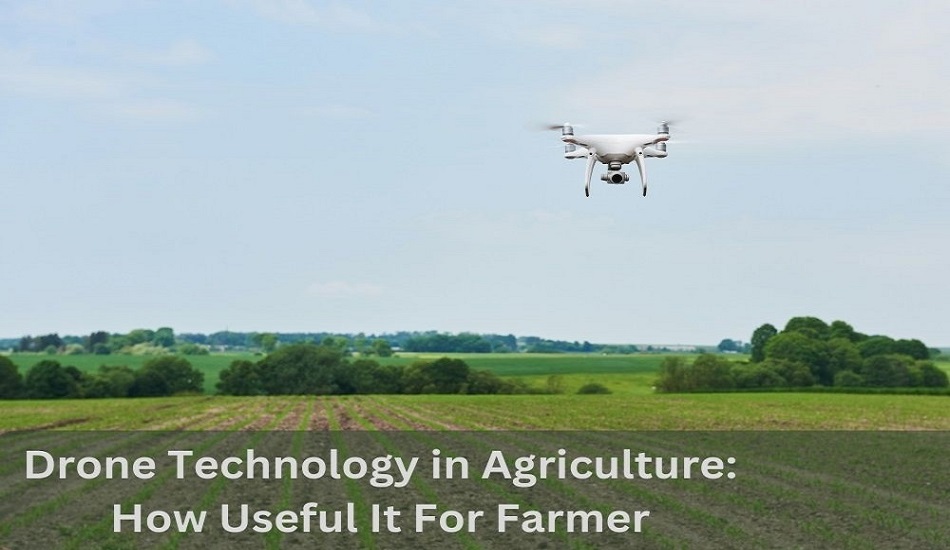The use of drones across various sectors is rapidly expanding. But it is in agriculture where this technology is making significant developments. Some reports show that the agriculture drone market is projected to grow in the coming years. The growth is expected from $1.2 billion in 2019 to $4.8 billion by 2024. That is surely an impressive figure. Drones are becoming increasingly essential on both large and small-scale farms. They are offering many benefits from scouting to security. Take a look at the transformative impact of drone technology on agriculture. We are also going to see the impact of drones on precision farming.
Use of Agriculture Drone in Precision Agriculture:
Precision agriculture is often facilitated by drone technology. It is reshaping the way farmers manage their crops. Drones like Normalized Difference Vegetation Index (NDVI) are equipped with specialized imaging equipment. This drone technology in agriculture is useful in monitoring plant health. NDVI utilizes detailed color information to indicate the well-being of crops. It allows farmers to identify issues promptly and take corrective measures. Unlike traditional satellite imagery, drones fly at lower altitudes. This provides clearer and more detailed images. This proximity allows for precisely identifying problems such as stand gaps after planting or early detection of diseases and pests.
The adoption of precision farming systems, aided by drone data, has shown the potential to increase yields by up to 5%. This is a substantial boost in an industry where profit margins are often less. The data gathered by drones assists farmers in making informed decisions related to planting and treatment. This contributes to optimized agricultural practices.
The Applications of Drone Technology in Agriculture
Drones are being increasingly employed in various aspects of agriculture. They are offering efficiency and accuracy:
Monitoring Field Conditions: Agriculture drones provide accurate field mapping. This includes elevation information, aiding in identifying irregularities, drainage patterns, and wet/dry spots. This information enhances the efficiency of watering techniques.
Planting and Seeding: Automated drone seeders are currently more prevalent in forestry. But they show promise for broader agricultural use. They are capable of planting seeds in hard-to-reach areas without endangering workers. They offer efficient and safe replanting options.
Spray Application: Drone sprayers are already widely used in some Asian countries. The drones can navigate challenging terrains to deliver precise spray treatments. While regulations vary, drone sprayers offer targeted applications. They also help in minimizing chemical costs.
Security: Drones play an important role in farm security. They monitor expansive areas efficiently. They provide oversight throughout the day. They ensure smooth operations, locate equipment, and even aid in the protection of livestock
Emerging Technologies: The Future of Agriculture Drone:
Many new technologies are being explored in drone technology in agriculture.
Drone Pollination: Researchers in the Netherlands and Japan are developing small drones. These will be capable of pollinating plants without causing damage. The aim is to create autonomous pollinating drones that can work independently to monitor crop health.
Drone AI: Improving Artificial Intelligence (AI) in drones is essential for recognizing diverse crops and planting patterns. Current technologies struggle with less common crops. Advancements in AI are crucial for making drones effective tools for smaller farmers in developing nations.
Drone Irrigation: Australian research is utilizing microwave sensing to capture accurate soil health information, including moisture levels. This technology allows for more efficient irrigation. This agriculture drone technology is crucial in the face of changing climate conditions.
Challenges and Considerations:
Drone technology in agriculture is becoming useful in farming. However, there are some challenges. The farmers and authorities need to figure out the same. First, there are rules (like how you use drones) that are still changing in many places. Also, we need to know more about how well drones work for different jobs on the farm. It’s like learning more about what jobs drones can do best.
We also need to do more research to make sure drones are doing a good job when we use them for things like spraying pesticides on crops. Farmers are being told to start small, meaning to use drones step by step. This way, they can learn what works best for their farm. It’s like trying out new things slowly to see what helps the most. Gradually we will understand more about drones. We can also expect that there will be better rules. In the future drones will change the way farmers do their work in the fields.
But as of now the use of drones is less. Farmers need to get more information about the use of drones in farming.
Conclusion:
Drones are changing how farmers work by giving them new and better ways to do things. As technology gets even better, drones could become a very important tool for all farmers. But, to make sure they work well, we need to think about the rules. We also need to start using them slowly and keep learning about how to use them better. Drones can make farming better and more efficient. They can help farmers take care of their crops in a better way in the future.
Do you require a drone for using it on your farms? For this, you can get in touch with Canada Sky Drone Services. Tell us about your exact requirements and we shall provide all the assistance that you need.


Recent Comments